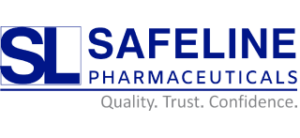GMP MANUFACTURING
The World Health Organisation describe Good Manufacturing Practice (GMP) as below.
Good manufacturing practice (GMP) is a system for ensuring that products are consistently produced and controlled according to quality standards. It is designed to minimize the risks involved in any pharmaceutical production that cannot be eliminated through testing the final product. The main risks are: unexpected contamination of products, causing damage to health or even death; incorrect labels on containers, which could mean that patients receive the wrong medicine; insufficient or too much active ingredient, resulting in ineffective treatment or adverse effects. GMP covers all aspects of production; from the starting materials, premises and equipment to the training and personal hygiene of staff. Detailed, written procedures are essential for each process that could affect the quality of the finished product. There must be systems to provide documented proof that correct procedures are consistently followed at each step in the manufacturing process – every time a product is made. WHO has established detailed guidelines for good manufacturing practice. Many countries have formulated their own requirements for GMP based on WHO GMP. Others have harmonized their requirements, for example in the Association of South-East Asian Nations (ASEAN), in the European Union and through the Pharmaceutical Inspection Convention. Source
CERTIFICATES OF ANALYSIS
Every batch of Labinic is manufactured to pharmaceutical standards. This includes the authorisation of Certificates of Conformance and Analysis.
STABILITY MONITORING
Labinic is stable at room temperature up to 25 degrees Celcius throughout the product lifecycle. Labinic can be refrigerated but should not be frozen.
MULTIPLE DOSE BOTTLE
We have been asked if Labinic could be available in single dose vials. The answer is it could, but there is simply no need for this – and it would simply put up the price. There have been no cases of harm arising from this method of dosing. We know that Neonatal nurses dose Vitamins and Iron in exactly the same way. This keeps down costs whilst maintaining safety. Over 1.5 million doses of Labinic have been given to Neonatal patients safely and effectively.
OSMOLALITY OF FEEDS IN PRETERM BABIES
Osmolality is important in premature babies – hyperosmolar feeds have been associated with NEC. If powdered probiotics (or other hyperosmolar medicines like sodium acid phosphate) are added to small quantities of milk, the osmolality can be in excess of 700 mOsm/Kg.H2O (which is very high). Labinic does not increase osmolality.
ADVERSE EVENT REPORTING
If you wish to report an SI or AE involving Labinic Drops, then please email anonymised clinical details, along with your name and organisation to Report. Depending on the case we undertake to share written anonymised reports with our customers to promote safety and learning and to update our website with useful links.

